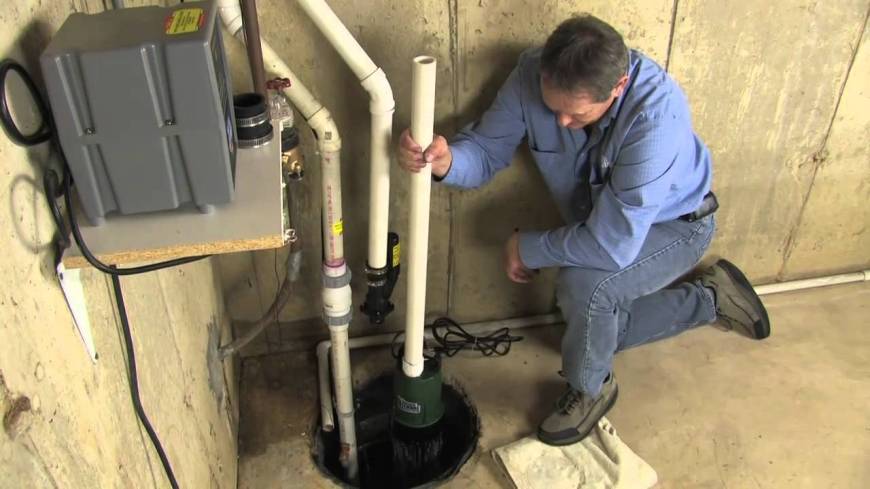The Definitive Guide to Cleaning a Sump Pump
The Definitive Guide to Cleaning a Sump Pump
Blog Article
They are making a few great points on How to Care for Your Sump Pump as a whole in the content followed below.

Sump pumps are crucial components in numerous homes, particularly in areas prone to flooding or too much wetness. They assist protect against water damage by effectively getting rid of excess water from basements or crawl spaces. Nevertheless, like any other device, sump pumps need routine upkeep to ensure they work efficiently when needed one of the most. Cleaning your sump pump is an important part of its maintenance, and comprehending just how to do it effectively can conserve you from costly repair work and potential disasters.
Introduction
Keeping a tidy sump pump is essential for its correct performance and long life. Ignoring this essential job can bring about clogs, malfunctions, and inevitably, water damages to your property. Consequently, finding out how to clean up a sump pump is crucial for house owners who depend on these gadgets to keep their basements completely dry and safeguarded.
Comprehending the Sump Pump
Prior to diving right into the cleaning procedure, it's necessary to have a standard understanding of exactly how a sump pump functions. Commonly installed in a pit or container listed below the cellar flooring, a sump pump contains numerous crucial components, including a pump, a float button, and a discharge pipe. When water collects in the pit, the float button activates the pump, which then pumps the water out through the discharge pipeline, away from the building's foundation.
Indicators of a Dirty Sump Pump
Knowing when your sump pump requires cleaning is critical for avoiding prospective malfunctions. Some typical indicators that show a dirty sump pump include unusual sounds throughout procedure, reduced water flow, and visible particles in the pit. If you notice any one of these signs and symptoms, it's essential to clean your sump pump promptly to avoid any type of more problems.
Preparing for Cleansing
Before you start cleaning your sump pump, it's important to take some security preventative measures. Beginning by shutting off the power to the pump to avoid any electrical crashes. Furthermore, wear proper protective equipment, such as handwear covers and goggles, to secure on your own from dirt, debris, and potential virus.
Detailed Guide to Cleaning a Sump Pump
Shutting Off the Power
Begin by disconnecting the power supply to the sump pump to stop any kind of mishaps while cleansing.
Removing Particles and Dust
Make use of a container or an inside story to eliminate any noticeable particles, dirt, or debris from the sump pit. Dispose of the debris effectively to stop it from obstructing the pump or the discharge pipeline.
Cleaning up the Pump and Float Switch
When the pit is clear of particles, carefully eliminate the pump from the pit. Examine the pump and the float switch for any signs of damages or wear. Use a soft brush or towel to clean the surface areas and eliminate any built up crud.
Purging the System
After cleansing the pump and float button, purge the sump pit with tidy water to remove any type of staying dust or debris. This will help make certain that the pump operates smoothly and successfully.
Looking For Appropriate Performance
Prior to reinstalling the pump, perform a quick examination to make certain that the float switch activates the pump appropriately. Pour some water into the sump pit and observe the pump's procedure. If whatever is functioning properly, you can reconstruct the pump and reconnect the power supply.
Upkeep Tips to Keep Your Sump Pump Clean
In addition to periodic cleaning, there are a number of upkeep suggestions you can follow to maintain your sump pump in optimum condition:
Conclusion
Cleaning your sump pump is an important aspect of its maintenance and guarantees that it operates successfully when you need it the most. By complying with the steps described in this guide and integrating regular upkeep right into your regimen, you can expand the lifespan of your sump pump and protect your home from water damage.
How To Clean a Sump Pump
Prepare The Materials
Plastic sheet or tarp Garden hose Scraping tool (putty knife or plastic scraper) Large bucket Wet/dry vacuum Remove the Sump Pump from the Power Supply
Unplug the sump pump from the power outlet or turn off the circuit breaker. Don’t skip this step, as it is crucial for your safety.
Cut Off Any Water Source
Lock all systems that drain into the sump pit, and inform everyone not to use them. Doing this step will prevent water from flowing into the pit while you’re cleaning.
Wrap the Bottom of the Pump
Place the pump in an area where you can clean it from all sides. Wrap the bottom portion of the sump pump with plastic tarp/sheeting for easier cleanup.
Clean the Pump
Sprinkle water onto the pump using a garden hose to loosen the debris. Ensure to spray all sides and openings. Remove any hard-stuck gunk with a scraping tool.
Rinse the Pump
Splash water again onto the pump using the garden hose. Doing so will flush down any remaining debris and gunk.
Drain the Check Valve
The check valve is a component of the sump pump that helps drain water and prevents it from flowing back. Open the valve and ensure to catch the drained liquid with a bucket.
Remove Excess Water With a Wet/Dry Vacuum
Use a shop vac to remove all the remaining water in the pump. Besides your device, the wet/dry vacuum can also help clear spills in the area where you cleaned the device.

I am very focused on Keep Your Sump Pump Clean, It'll Keep You Dry and I'm hoping you liked the new page. If you enjoyed our blog post if you please don't forget to share it. Kudos for your time. Please check our website back soon.
Prices & Booking Report this page